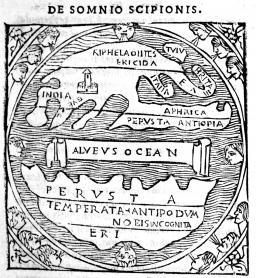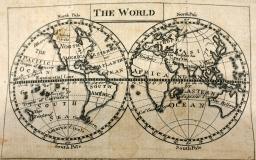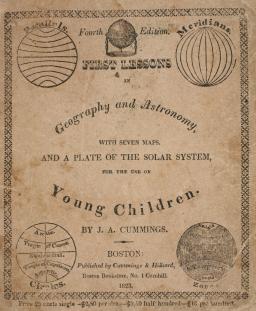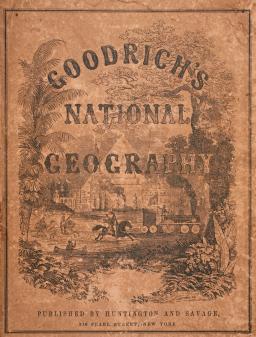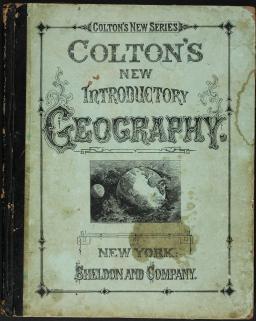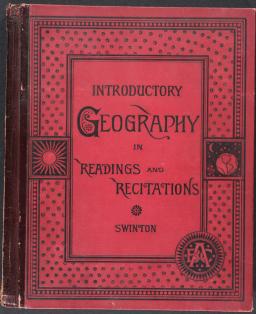
Supporting Education and Instruction. A key theme in both the faculty scholar’s courses in the history of cartography and geography and in guest classes dealing with the history of modern American culture is the development of geographical literacy, especially through primary education. We have accordingly made a conscious effort to collect geographical text books and other works associated with past pedagogical activities.
The works in this case illustrate how American children were taught to think of the structure of the world in the later nineteenth century. This plate, from Levi Yaggy’s complex and ambitious teaching atlas, summarizes several strands of thought (item 19). The division of the world into five broad climatic zones — frigid, temperate, and torrid — was first made by the ancient Greeks (item 20). The zones are defined by geometrical circles that mark the sun’s passage. The frigid zones are bounded by the Arctic and Antarctic circles, the parallels of latitude (66°33'38? N and S) that mark the limit of 24-hour sunlight in summer or 24-hour night in winter. The torrid zone runs around the Equator, being bounded to north and south by the tropics of Cancer and Capricorn, the parallels of latitude (23°26'22? N and S) that mark the limits of where the sun can appear directly overhead. In between lay the northern and southern temperate zones. The delineation of the world into zones was a basic element of world maps and geographies through the early 1800s (as items 21-23b and 30). American writers increasingly used the zones to categorize and explain the distribution of the world’s flora, fauna, and peoples (item 23a and 25), even displaying stereotypical images of each without any overt reference to a map (item 24). Yaggy thus equated the northern and southern frigid zones as inhospitable, frozen wastes, the torrid zone around the equator as the proper site of the world’s indigenous peoples, the northern temperate zone as the home of the world’s advanced civilizations, and the southern temperate zone as the proper site for White colonial settlement.
19. Levi W. Yaggy (b.1848, fl. 1876-1921)
“The Five Zones Showing in a Graphic Manner the Climates, Peoples, Industries & Productions of the Earth,” in Yaggy’s Geographical Study: Comprising Physical, Political, Geological and Astronomical Geography (Chicago: Western Publishing House, 1887), map 8
Chromolithograph; 158cm x 96cm (paper)
OML Collections (Gift of Jean F. Hankins)
Note that the discussion of climatic zones in the text (p.19) directs the student to consult the diagrams on the book’s cover.
22. Jacob Abbot Cummings (1772-1820)
Cover of First Lessons in Geography and Astronomy (Boston: Cummings and Hilliard, 1823)
Stereotype; 15cm high
Smith Collection



